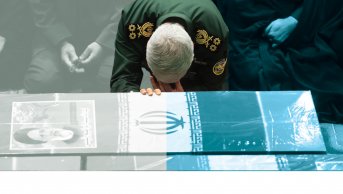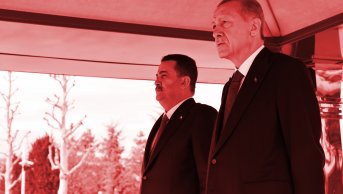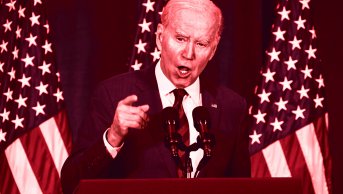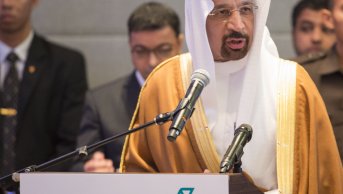What does the DAESH attack in Oman tell us?
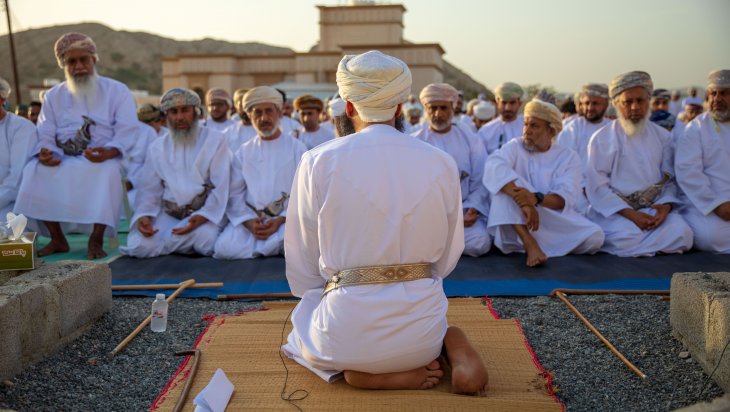
Everyone was shocked by the terrorist attack on a Shia Mosque in the "Al-Wadi Al-Kabir" area of Muscat on July 16th, which was claimed by the terrorist organization DAESH. This is the first time that DAESH has carried out a terrorist act in the Sultanate of Oman, the Gulf country that is considered one of the most secure Gulf countries and socially harmonious among its sects.
This terrorist attack raises several questions about its motives and sparks discussions about the agendas and goals of DAESH in the GCC countries.
DAESH in the Gulf
During the rise of DAESH from 2014 to 2016, seldom terrorist attacks occurred in Saudi Arabia and one in Kuwait, claimed by terrorist groups that pledged allegiance to DAESH and called themselves "Wilayat Najd," "Wilayat Hejaz," and "Wilayat Bahrain." At that time, DAESH identified its targets in its propaganda in the Gulf countries, which included government security forces, non-Muslim foreigners residing in those countries (especially Americans and Europeans), ruling families, and Shia Muslims.
The most serious attacks claimed by "Wilayat Najd" include the attack on the Shia Mosque in Dalwah, Al-Ahsa Province, eastern Saudi Arabia, in November 2014; the bombing of Imam Ali Mosque in the town of Qudaih, Qatif Province, east Saudi Arabia, in May 2015; and the bombing of Imam Sadiq Mosque in Kuwait in June 2015.
Meanwhile, "Wilayat Hejaz" claimed responsibility for the bombing of the Emergency Forces Mosque in Abha, southwestern Saudi Arabia, in August 2015, and the bombing of the Al-Mashhad Mosque in the Najran region, southwestern Saudi Arabia, in October 2015.
In October 2015, "Wilayat Bahrain" claimed responsibility for a terrorist attack on a Shia Mosque in the town of Saihat in Qatif.
After 2017 and the successive defeats of DAESH in Syria and Iraq, the activities of these terrorist groups disappeared, and DAESH no longer referred to "Wilayat Najd," "Wilayat Hejaz," or "Wilayat Bahrain" in its releases. This was mainly due to the eroding territorial control of DAESH in Syria and Iraq.
The Gulf countries are characterized by a solid foundation of local loyalties and shared interests between societal forces and the ruling authorities, which DAESH cannot easily penetrate.
After the war on DAESH and its security, economic, and humanitarian repercussions, Gulf governments have taken stringent measures to contain extremist religious rhetoric and its outputs within their societies. They have also enhanced their counter-terrorism efforts and developed related legislation. This has led to increased awareness of the dangers and consequences of terrorism within Gulf societies in recent years. The phenomenon of Gulf youth being captivated by extremist ideas, observed in previous decades, is now on the path to fading away.
Therefore, it has been difficult for DAESH to carve out specific areas and militarily control them by deploying large numbers of its members in any Gulf country, as it did in Syria and Iraq previously and as it is currently doing in the Sahel, Sahara, and Horn of Africa regions. Even in Saudi Arabia, which covers over two million squares kilometers, most of which are deserts and remote areas, DAESH has not been able to achieve such control.
Instead, whenever the opportunity arises, DAESH seeks to carry out qualitative terrorist attacks (lone wolves) in one of the Gulf countries to attract widespread media attention. This is to send a message that DAESH still "exists" and is "powerful," and that it has managed to execute an attack in one of the Gulf countries, which are considered the most secure and stable in the entire region.
The goal of DAESH with these attacks is to boost the morale of its other members around the world and to use the media coverage to recruit new members for the organization.
These attacks are probably carried out by the organization’s veteran members who have managed to evade security surveillance in the Gulf countries (sleeper cells). Alternatively, the terrorist organization recruits new members specifically to carry out a particular terrorist attack after subjecting them to the influence of DAESH’s misleading propaganda and extremist ideas, similar to what happened with the three brothers who carried out the recent terrorist attack in Oman.
DAESH is also seeking to form "ideological sleeper cells" in Gulf societies, to provide it with religious fatwas and sermons about contemporary events that suit its ideological approach and goals, helping it to run its propaganda machine. In this context, DAESH aims to establish connections with the few clerics who "secretly" oppose the current Gulf governments' efforts to reform religious discourse in their societies and clean it of extremist ideas and incitement to violence.
On the other hand, DAESH constantly seeks to gain new supporters for its extremist ideological approach in Gulf societies, even if they are not willing to engage in acts of violence, solely to secure their financial support. It is well known that the income level of Gulf citizens is the highest in the entire region.
Why Oman?
DAESH propaganda relies on two main narratives: the first is that there is a Western project led by the US targeting Muslims, asserting that they are now waging the largest ideological, military, economic, and media war against Muslims in general. According to DAESH propaganda, most governments in the region are "collaborating" with this project.
The second narrative of DAESH propaganda is that there is another "Iranian Safavid" project targeting Sunni Muslims, claiming that Iranians and their proxies are now waging the largest ideological, military, economic, and media war against Sunnis. According to DAESH propaganda, most Shia are "collaborating" with this project.
DAESH has positioned itself as the sole defender of all Muslims, and Sunnis in particular, against these two projects to justify its terrorist actions.
The US justifies its military presence in the region as a means of combating terrorism. Conversely, DAESH portrays this presence in its propaganda as targeting Muslims. This raises the question: Does the US benefit from the terrorist attacks carried out by DAESH from time to time to justify their presence in the region? Or does DAESH benefit from the continued US military presence in the region to justify its terrorist activities? Or are both benefiting simultaneously?
In the same context, Iran has made significant penetrations into several regional countries. One of the objectives of these penetrations, as the Iranians promote "unofficially," is to protect the Shia in the region from the threat of terrorism. Conversely, DAESH portrays the Iranian penetrations in its propaganda as targeting Sunnis. This raises the question: Do the Iranians benefit from the terrorist attacks carried out by DAESH against Shia from time to time to justify their penetrations in the region? Or does DAESH benefit from the continued Iranian penetrations in the region to justify its terrorist activities? Or are both benefiting simultaneously?
Currently, it is difficult for DAESH to target the US and Western military bases spread across the Gulf due to the heightened security measures of those bases, and the weakened recruitment of DAESH. Therefore, DAESH is focusing on easier targets, namely Shia mosques and gatherings in the Gulf countries.
In the month of Muharram each Hijri year, Shiites openly and notably perform the Ashura rituals with large gatherings of people. This month has always been a preferred time for DAESH to carry out terrorist attacks against Shiites.
Shiites represent a significant portion of the population in three Gulf countries: Saudi Arabia, Kuwait, Bahrain, and a small percentage in Oman. After repeated DAESH attacks on Shiite targets in Saudi Arabia and Kuwait between 2014 and 2016, the authorities in these two countries tightened their security measures to protect Shiite communities and their mosques, making them difficult targets for DAESH.
These factors might have been one of the reasons for DAESH choosing Oman, which has never been on DAESH’s activity map, to carry out the "traditional" Ashura attack against Shiites. In other words, DAESH aimed to achieve "surprise".
There are no official statistics on the percentages of religious sects in Oman, but all estimates agree that Ibadis represent the largest percentage at around 70%, followed by Sunnis at about 27%, and then Shiites at around 3%.
Moderate Sunni Muslim jurists view Ibadism (al-Ibāḍiyya) as a sect of Muslims, with specific doctrinal issues that bring them closer to the “Mu’tazila” doctrine. They also have a respected Jurisprudential school considered among the accepted Islamic sects.
Oman is considered the most religiously tolerant country in the Gulf, with a very advanced level of coexistence and harmony among the different sects of Omani society. The country has not witnessed any major armed sectarian conflict. In Oman, you can find an Ibadis mosque where Sunnis and Shiites pray together with Ibadis, or a Sunni or Shiite Mosque where similar things happen. Additionally, the state of justice and equality among sects in Oman is quite acceptable compared to other Gulf countries.
This is one of the elements of surprise in the recent DAESH terrorist attack in Oman; it occurred in a country that does not experience sectarian strife. Most of DAESH’s previous attacks against Shiites were in countries with deep sectarian divisions, such as Iraq, Syria, Pakistan, Afghanistan, and Iran (the recent attack in Kerman), or in countries with a low level of harmony among societal sects (Saudi Arabia, Kuwait).
We can also add to DAESH’s goals behind this recent terrorist attack, "disrupting the stability of Omani society."
Pressuring Oman's foreign policy
Oman's foreign policy is characterized by independence and balance. Oman is part of the Gulf bloc allied with the US, but at the same time, it does not consider itself part of the US-Gulf coalition against Iran. Oman is the Gulf country with the most advanced relations with Iran.
Oman is currently playing a key role in several mediation efforts to de-escalate regional conflicts, including mediation between the US and Iran as well as mediation between the warring parties in Yemen.
Of course, these Omani policies do not align with DAESH’s agenda and goals. It is not in the interest of this terrorist organization to achieve stability in the region, as it thrives on the spread of chaos and conflicts.
DAESH believes that Oman, through these mediations, is helping to relieve pressure on its (presumed) enemies, such as Iran and the Houthis.
Therefore, one of the goals of the recent terrorist attack might have been to push Oman to change its foreign policy.

